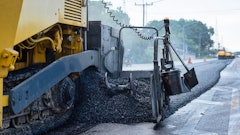
There’s no denying that many U.S. states simply do not make a priority of preserving their existing paved infrastructure. This is really a crime because pavement preservation is a cost-effective way to both extend the life of roads and improve their safety.
Let me be clear.
What we’re talking about here is actual preservation: preserving the integrity of the original surface. Adding an overlay to existing asphalt is not preservation…it’s repaving. So much material, labor, and money could be saved if we shifted our efforts to preservation first.
How did we get ourselves into this situation? Let’s look at a number of reasons why states may not spend more money on pavement preservation:
- Short-term thinking. Pavement preservation is a longer-term investment, but many state legislatures are focused on short-term results. This can lead to a reluctance to spend money on pavement preservation, even if it is a cost-effective way to extend the life of roads and improve safety.
- Limited funding. State transportation budgets are tight, and pavement preservation often competes with other priorities, such as new road construction and public transit (again, short-term thinking).
- Lack of awareness. Many people are not aware of the benefits of pavement preservation, especially emerging biobased treatments, and this can make it difficult to advocate for increased funding.
- Political pressure. Some states may be under pressure from special interests to spend money on other projects—such as new road construction.
What happens all too often is this: transportation departments and municipalities just don’t budget for preservation, which results in throwing good money after bad.
According to a Washington State Department of Transportation report, that state agency has requested “$726 million towards a $10 billion need to preserve transportation infrastructure. This $10 billion includes approximately $8 billion to preserve the WSDOT-managed portion of the transportation system in minimum acceptable condition at the lowest cost.”
As this document goes on to state, Washington’s “transportation infrastructure is the backbone of our state’s economy and way of life, but the aging of our infrastructure built in the 1960s, additions to our transportation system, and years of underfunding preservation has the state on a path to failure.
“Washingtonians own a multimodal state transportation system that would cost nearly $200 billion to replace, but the state is not spending what is necessary to keep that system in good working order. This threatens not only the transportation system itself, but past investments by taxpayers.”
Not good.
Why is this? It’s a systemic problem. Municipalities want the work to be noticeable, so what do they do? Overlays. But overlays are not preservation, they just make the old pavement darker. They’re a Band-Aid and, in the long run, an expensive one. Because darkening pavement just exacerbates the heat island effect, which contributes to higher temperatures and air pollution levels and, ultimately, climate change.
There’s little doubt that this situation exists in most U.S. states, but we shouldn’t accept it as business as usual. There are many relatively simple things that can be done to prioritize pavement preservation, including:
- Increasing funding for pavement preservation by raising taxes, reallocating existing resources, or seeking federal grants.
- Educating the public about the benefits of pavement preservation through public awareness campaigns and outreach to stakeholders.
- Investing in biobased treatments and other technologies that show a commitment to not only pavement longevity but also environmental sustainability and fighting climate change.
- Streamlining the pavement preservation process by reducing bureaucracy and coordinating decision-making at the state and local levels—while holding agencies accountable for preservation budgets.
- Investing in training for state and local transportation officials on pavement preservation techniques.
The Federal Highway Administration (FHWA) has a number of programs and initiatives to promote pavement preservation, and many states are beginning to develop their own pavement preservation programs. But none of these efforts is happening nearly soon enough. And states are still very slow to adopt new technologies that can lengthen the lifespan of pavement.
We as an industry can and must take an assertive—if not aggressive—stand on this issue. Or we will continue to squander state budgets on unnecessary paving projects where the money could be more effectively utilized elsewhere.



























